The first-ever exhibition on the fashion and interior design of Thea Porter who pioneered bohemian chic in the 1960s and 1970s opened earlier this month in London’s Fashion and Textile Museum. Curated by Dennis Northdruft and Laura Mclaws-Helms, the retrospective covers Porter’s life and career from her early years in Jerusalem and Damascus, Beirut in the 1950s, Soho in the 1960s, and New York, Los Angeles and Paris in the 1970s. Address contributor Grace Wood visited the exhibition.
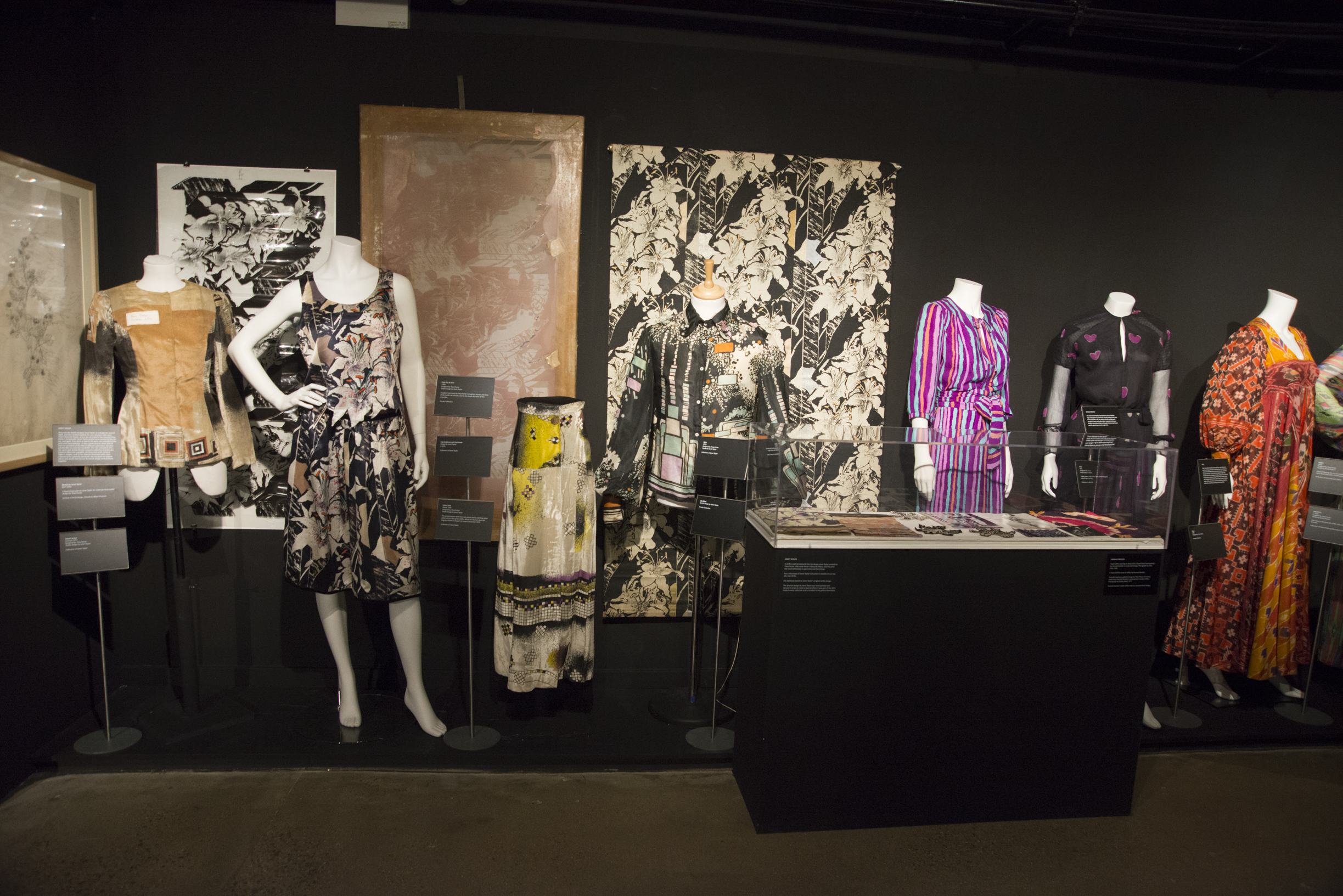
source: Fashion and Textile Museum / Kirstin Sinclair
Before stepping into the exhibition, I knew very little about Thea Porter (1927 – 2000). Neither as a fashion designer, or as a woman. Indeed, this was the initial inspiration behind fashion historian and guest curator Laura McLaws Helms’ decision to showcase the life of Porter – a name which has been somewhat overlooked in the history of fashion. Helms re-captures and recalls how Porter pioneered luxurious, bohemian style in the 1960’s and 70’s, transporting it from the Middle East to the Western world.
The retrospective exhibition chronologically explores both Porter’s personal life and career, with the opening corridor showcasing both contrasting aspects. Whilst one side is dedicated to a montage of family photographs, depicting Porter’s early life in the Middle East in the 1930’s and 40’s, the parallel displays the original Middle Eastern garments which initially inspired Porter as an interior designer. Born Dorothea Naomi Noelle Sigel in Jerusalem in 1927 and raised in Damascus, Porter’s nostalgia for Syria remained with her for life. It was whilst roaming the bazaar’s of Damascus with her mother that she learnt about the fabrics and trimmings, buttons and lace, bangles, gold and precious stones which would go on to become seminal marks of her work.
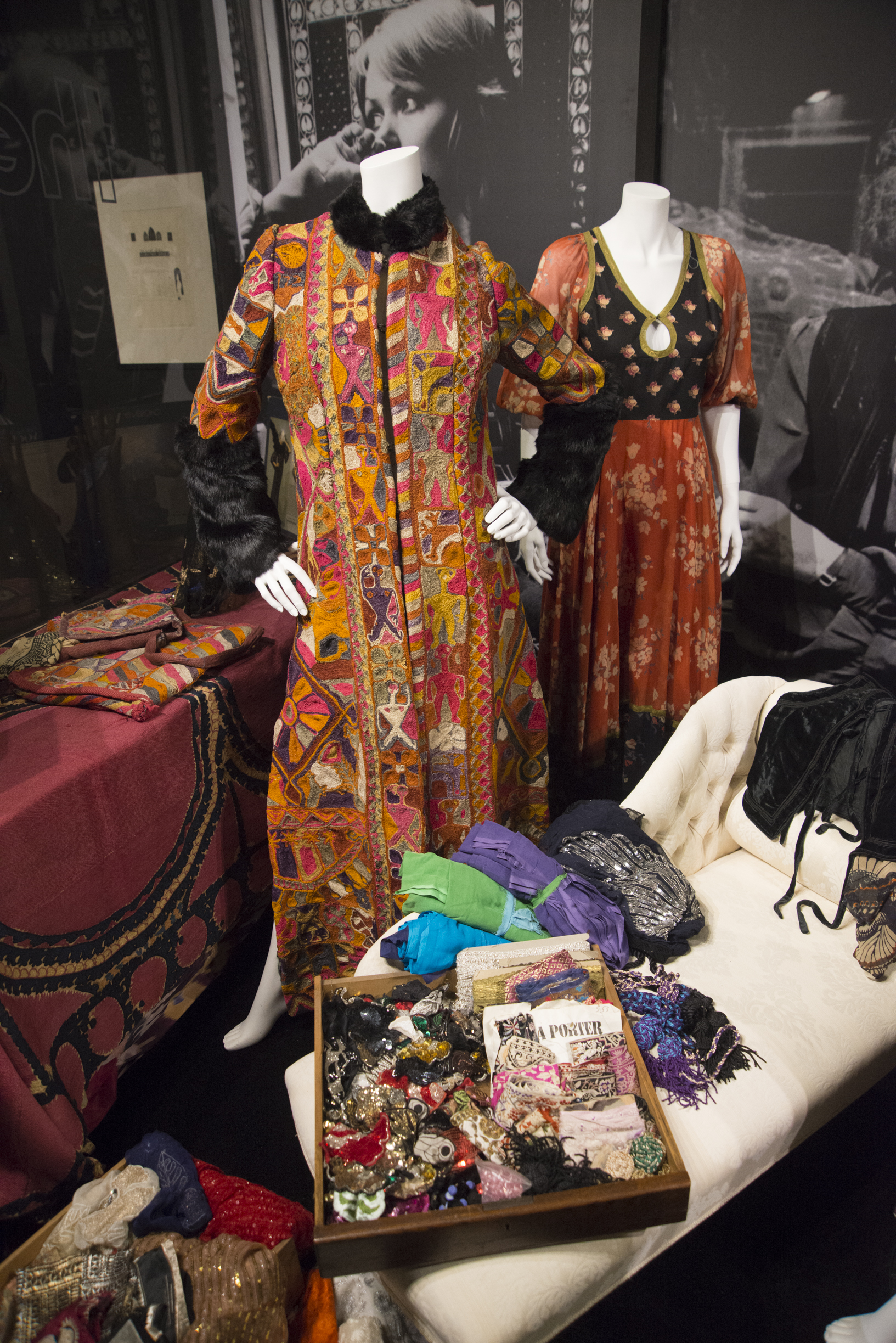
source: Fashion and Textile Museum / Kirstin Sinclair
Porter’s love for these materials at an early age is reflected in the exhibition’s recreation of her iconic Greek Street shop, which opened in 1966 after she settled permanently in London. “I interviewed a lot of different people who knew Thea, and they all said her Greek Street store was like walking into an Aladdin’s cave” claims Helms. “As if walking into a magical jewellery box, full of amazing textiles and fabrics”. Originally opened as Thea Porter Decorations Ltd, Porter sought to establish herself as an interior designer, with her shop selling furniture, rugs, embroidered textiles and traditional kaftans, most of which were imported from Syria. Yet, it was whilst working in her store that Porter unintentionally launched her career as a fashion designer, after she began commissioning replicas of the authentic Middle Eastern kaftans she sold. The garments were an instant success, with design requests pouring in from celebrity admires, whilst newspapers and magazines began featuring Porter’s designs as the epitome of hippie fashion.
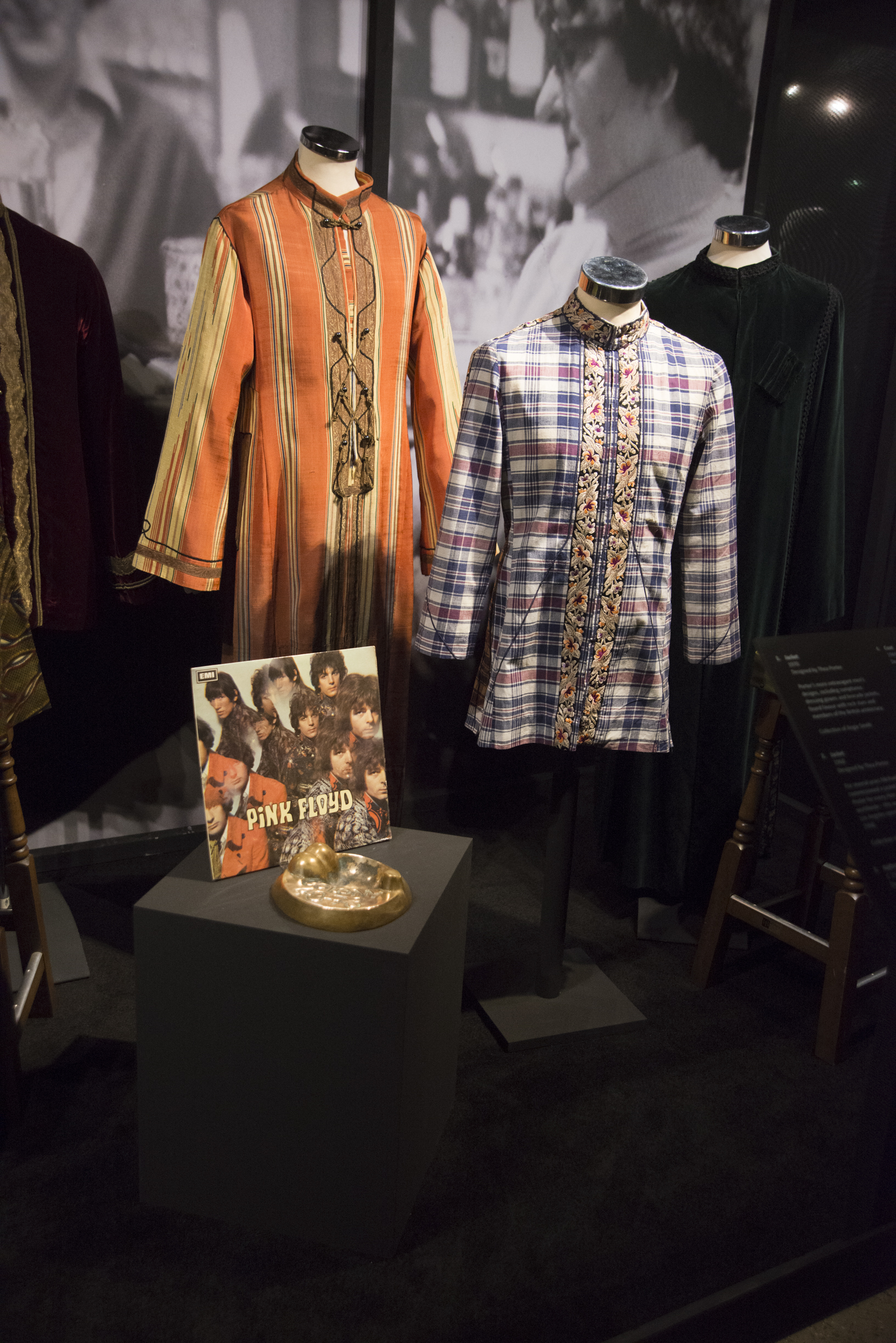
source: Fashion and Textile Museum / Kirstin Sinclair
The creation of the exhibition involved sourcing, identifying and securing garments from across Europe and North America, with loans ranging from major museums and archives, to private individuals. A selection of garments worn by high profile clients were secured, which running with the overall theme of the exhibition, are displayed to chronologically follow Porter’s career. Three pieces worn by American theatrical producer, Michael Butler are shown early on in the space, as Porter’s earliest fashion designs and debut collection in June 1968 were primarily focused on menswear. Yet as her womenswear collections grew rapidly and caught the attention of many, Porter hoped to replicate her success in women’s fashion in America – setting her sights on New York and Los Angeles. On display are therefore a variety of dresses worn by Veronique Peck (wife of Hollywood actor Gregory Peck) depicting the early 1970’s when she became the go-to designer for a show-stopping gown amongst Hollywood wives. In addition to the garments worn by the high profile, a personal side to Porter is represented through selected garments, with a cream and black, floral printed Gipsy dress she designed for her daughter, Venetia’s 21st birthday also showcased.
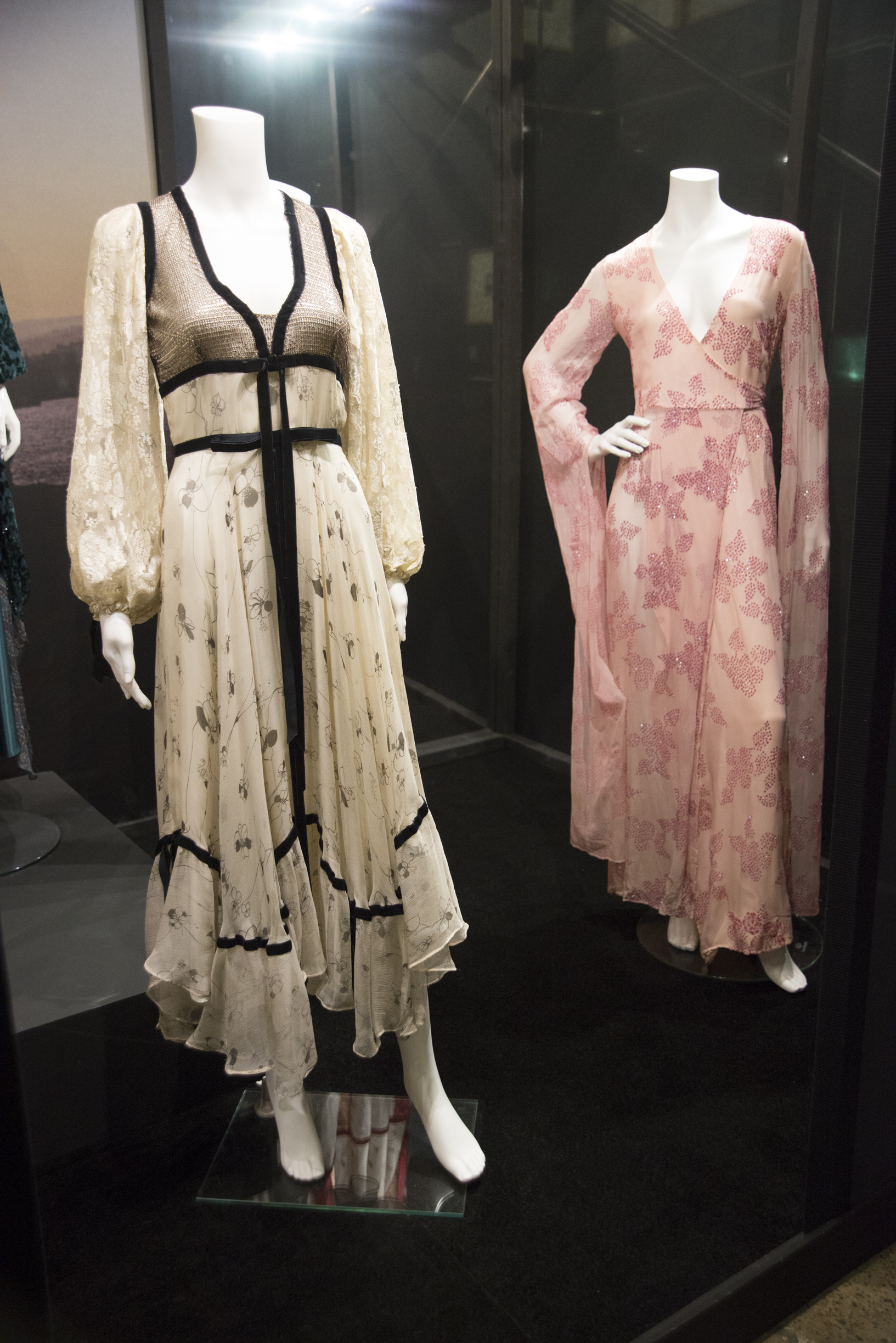
source: Fashion and Textile Museum / Kirstin Sinclair
As the first exhibition to look into Porter’s life in detail, Helms reveals she has a lot to thank Venetia Porter for. “I started researching Thea about four years ago, initially because I liked her clothes, but I soon realised that there was just one paragraph on Thea which was re-printed in every book and that is all the information I could find” she notes. After trailing through old articles, Helms came across Porter’s daughter name, which lead to her tracking Venetia down. The two women met in London and Helms described how she went from having very little information on Porter, to having every letter, every order form and every bill she had ever owned. “It was a dream as a fashion historian to be handed an archive complete with details from both a business and personal perspective”. As she stands wearing a gold, Chazara jacket (a style of garment which Porter listed in her unpublished memoir as one of her seven key pieces) it is clear that Helm’s is passionate for Porter, and despite the greater part of the exhibition dedicated to the past, the closing section of the exhibit focuses on Porter in the present and future. Two dresses from Anna Sui’s Spring Summer 2015 collection are on display, as Helms reveals how the American fashion designer took direct inspiration from Porter and her contemporaries in 1960’s London. Despite the fact that Porter’s name is not as well remembered as her contemporaries, her garments are still very much sought after, with Julia Roberts, Nicole Richie and the Olsen twins amongst those who continue to collect Thea Porter when pieces come up on the market.
Helms hopes that the exhibition illustrates the sheer breath of Porter’s designs beyond the Abaya dress, which is arguably her most recognised silhouette. For me, this was particularly demonstrated in the showcasing of Thea Porter France – a twenty-five piece, ready-to-wear collection launched and sold in Paris in 1976. Although still true to her love of textiles, the sea of black and gold, velvet and lace garments had evidently been adapted to accommodate the luxurious, Parisian woman in contrast to the typically bohemian and colourful garments on sale in Soho and New York. As I leave the exhibition, I feel an overwhelming sense that Helms has achieved her goal in re-cementing Porter’s legacy. From interior to fashion, Syria to London, the story behind the bohemian pioneer has finally been told.
Thea Porter: 70‘s Bohemian Chic is on display at London’s Fashion and Textile Museum until 3rd May 2014.
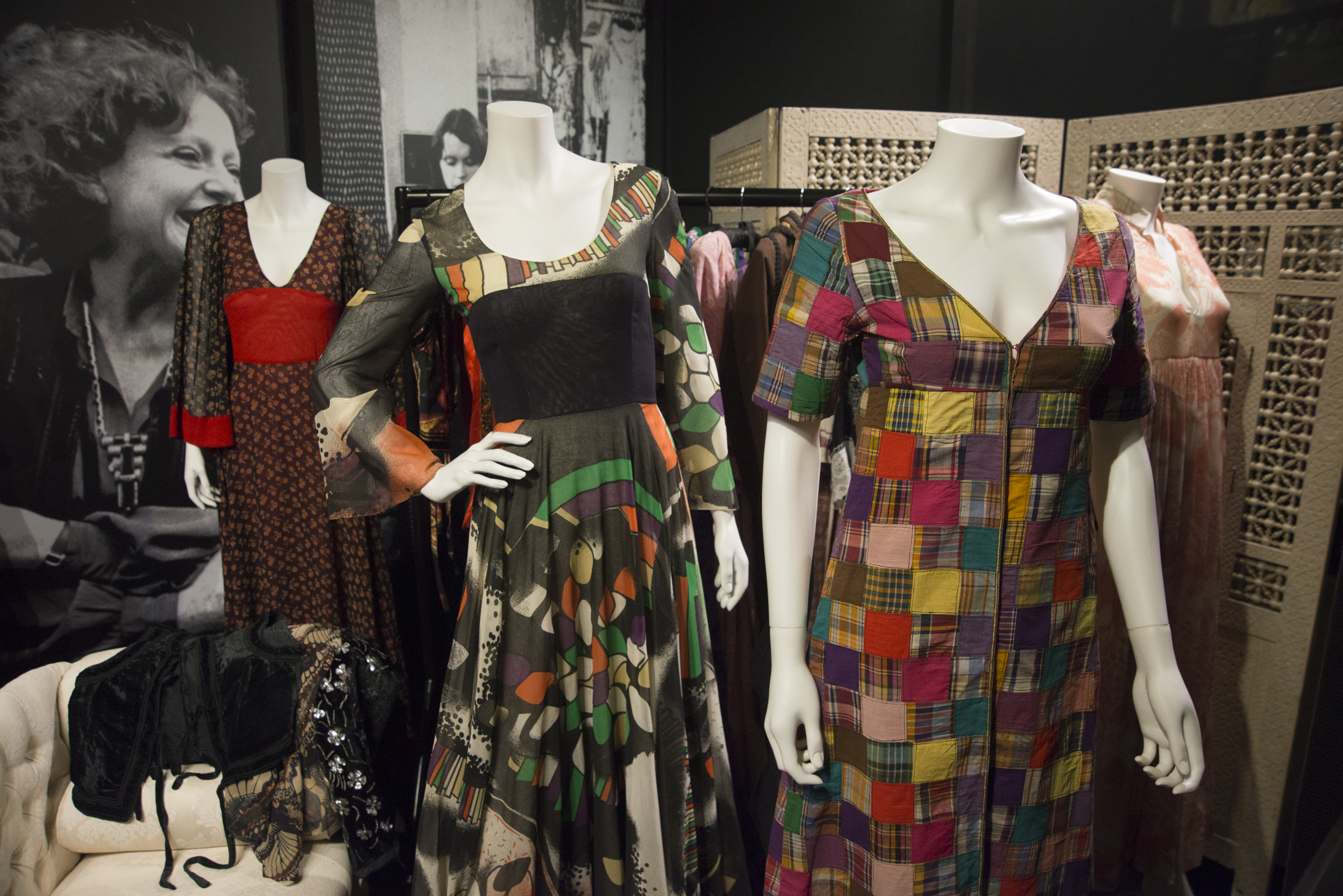
source: Fashion and Textile Museum / Kirstin Sinclair

